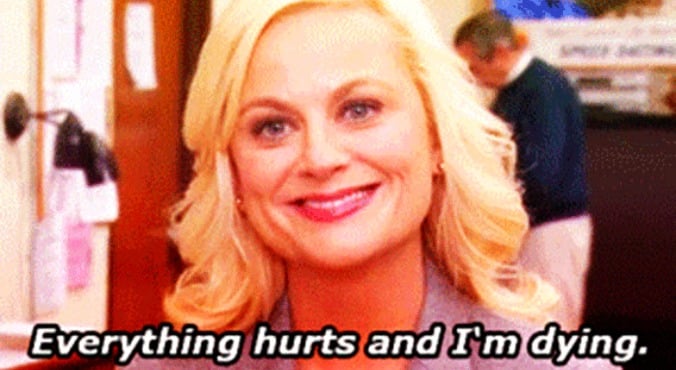
Image: Parks and Rec.
Last year, I tried my first reformer pilates class. I had a flight to South Africa booked in two days later but figured the bulk of my post-pilates ache would be over by the time I reached the airport, so I wasn’t too concerned.
Alas, I was very, very wrong. When the session wrapped up, our instructor proffered a dire warning: “You probably won’t feel it tomorrow, but the day after, you definitely will.” Unfortunately for me, he was absolutely spot on, and I endured an extremely achey 14 hours in the air.
RELATED: the 5 most common aches and pains you get during exercise.
A bit of soreness (or “the burrrrrn“, as fit people love to call it) after exercising is to be expected, but I’m consistently surprised by how the full force of my workout tends to hit a full two days after the fact. Day one is bad enough, but then boom — I find myself walking like… well, someone much older than my 26 years.
This phenomenon has a name: delayed onset of muscle soreness, or DOMS. It’s characterised by tenderness and soreness in your muscles, which peaks 48-72 hours after your workout is done. (Post continues after gallery.)
How the rich and famous stay fit
“DOMS frequently occurs following unaccustomed or strenuous exercise, and in particular, with strength training … [it] is largely caused by exercise-induced micro trauma to your muscle fibres,” explains Katie Lyndon, Accredited Exercise Physiologist at Exercise & Sports Science Australia.
If you’re anything like me, you probably just saw the word “trauma” and felt immediately guilty for what you’ve been inflicting on your muscles. (Sorry, guys — promise I didn’t mean to cause you harm!)